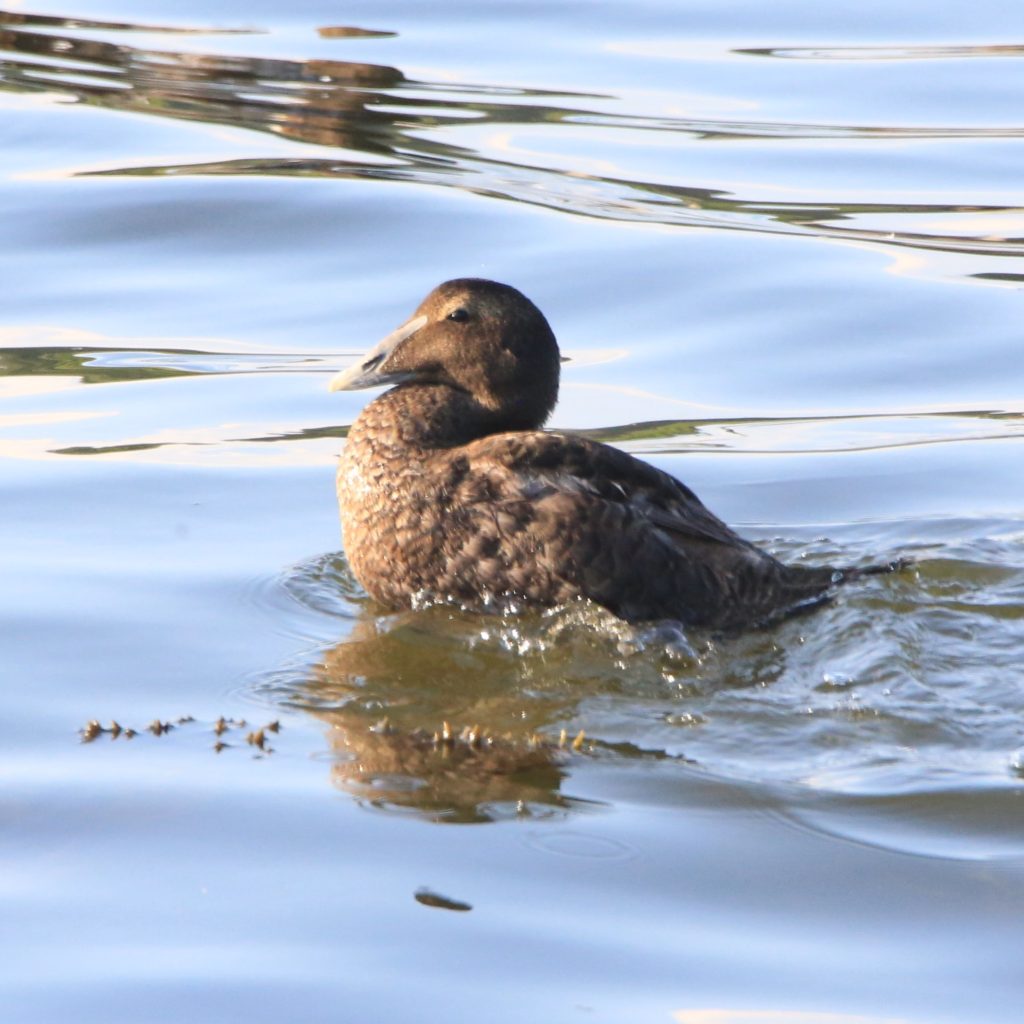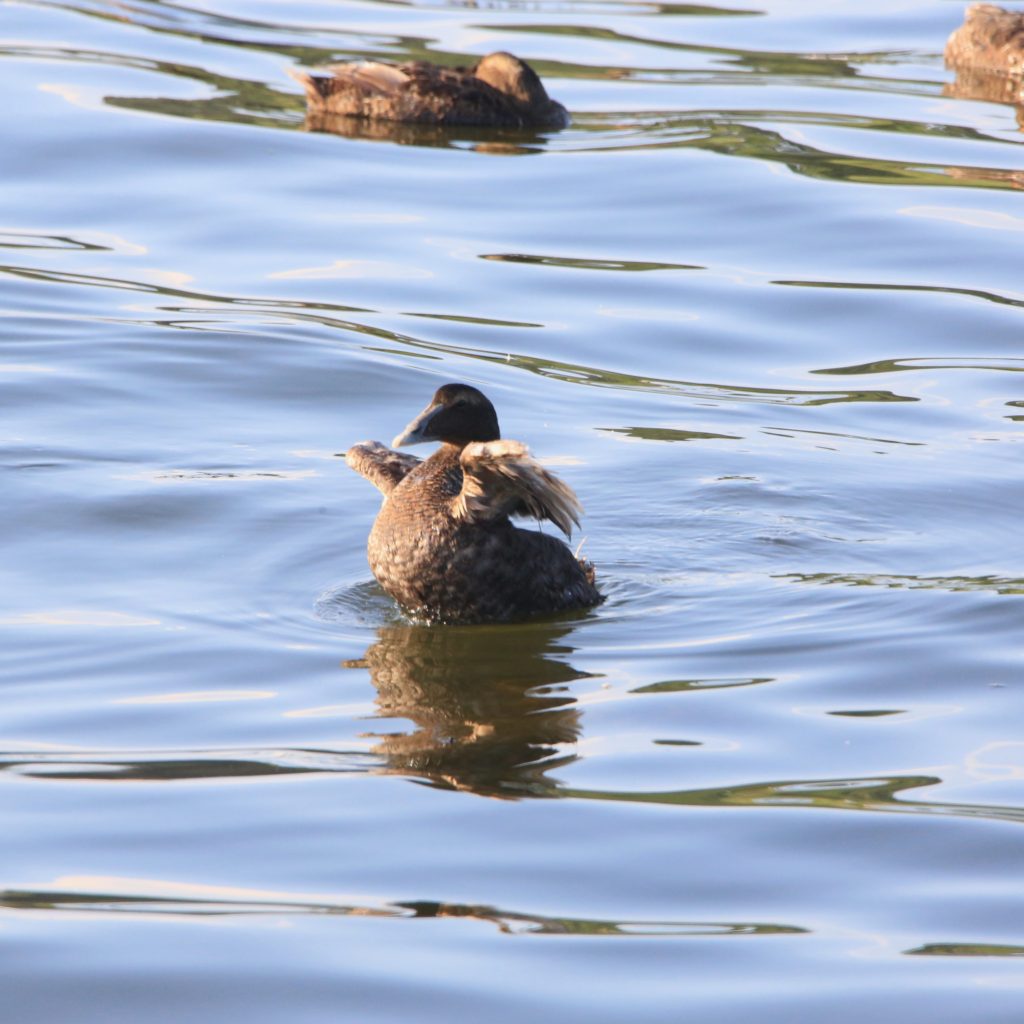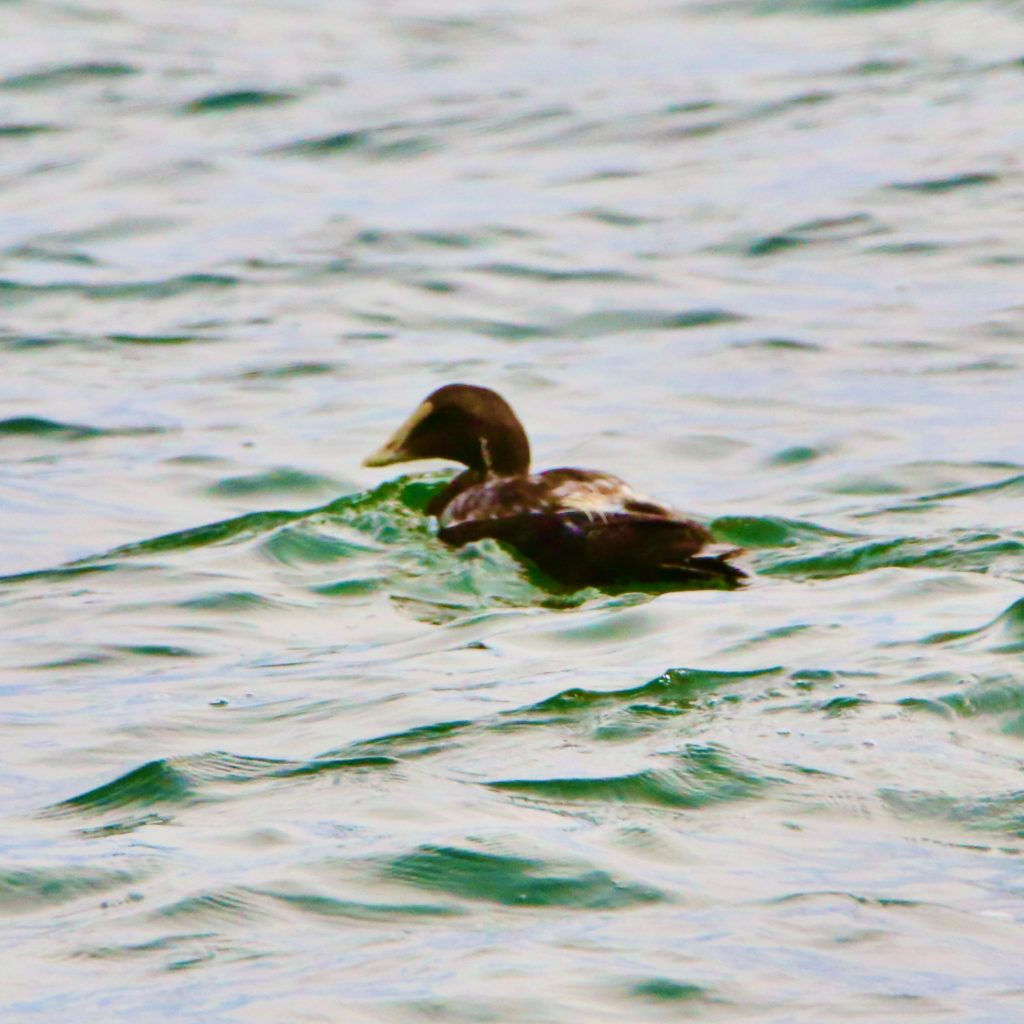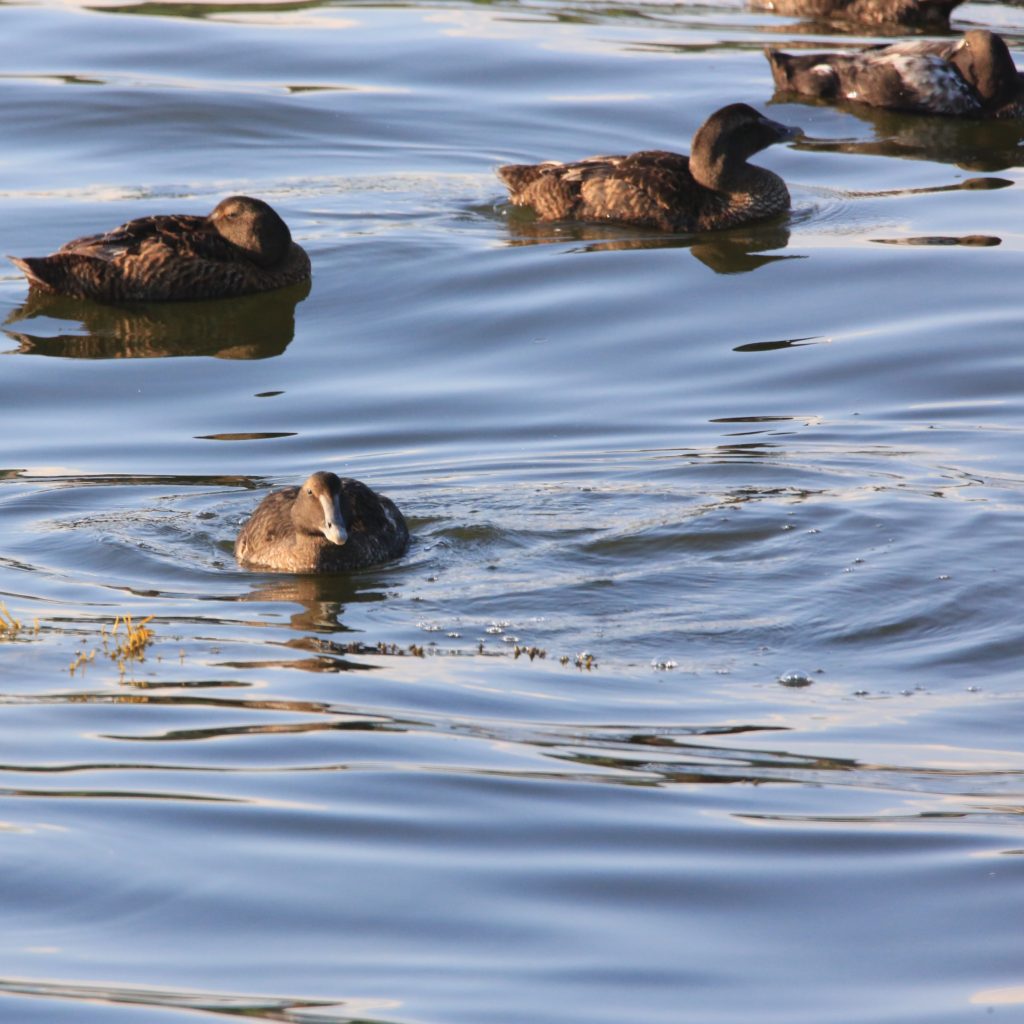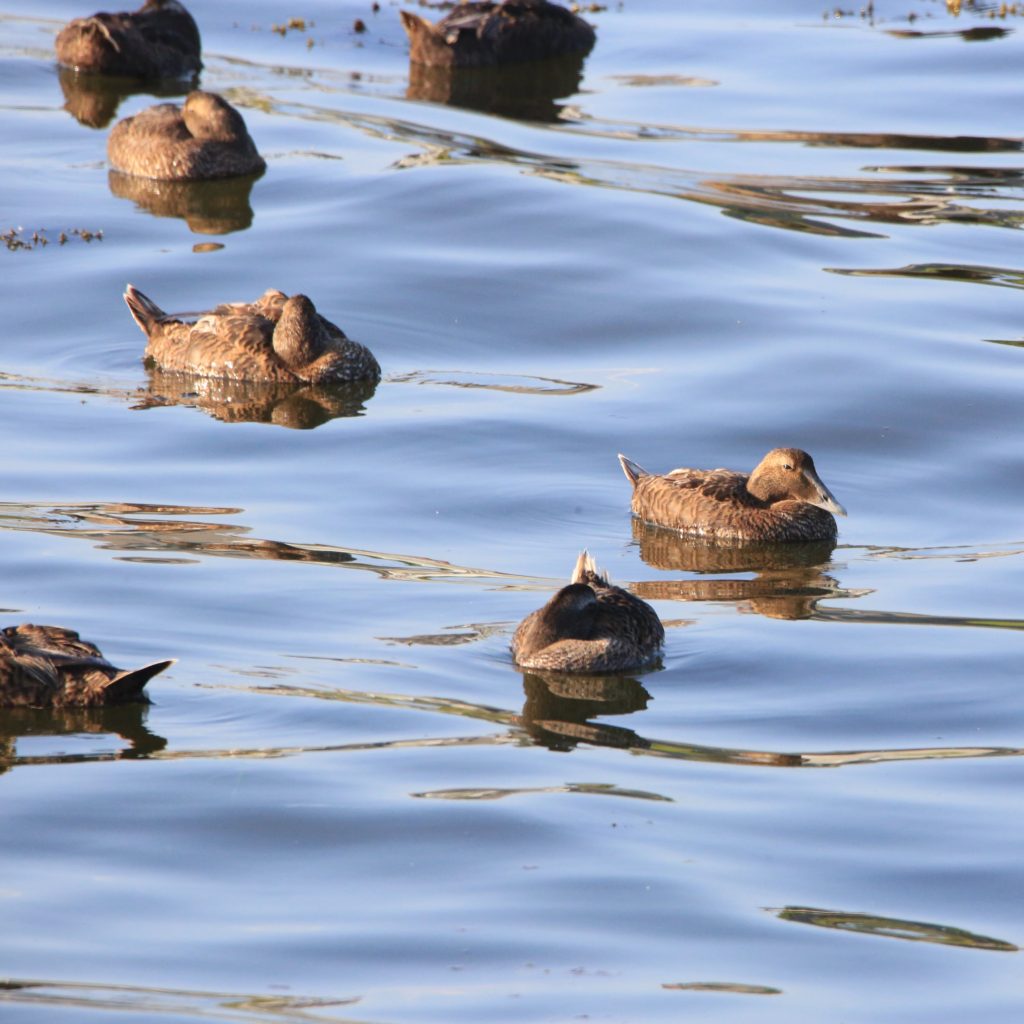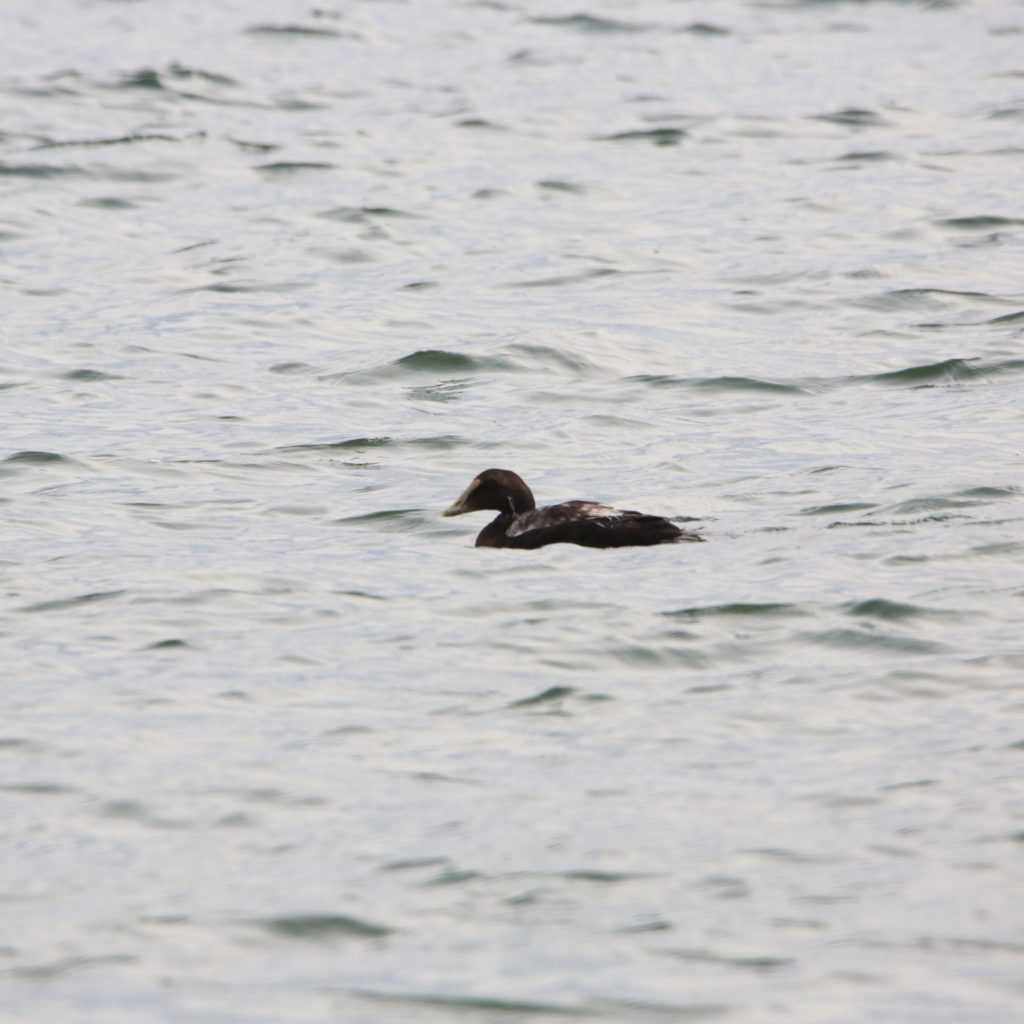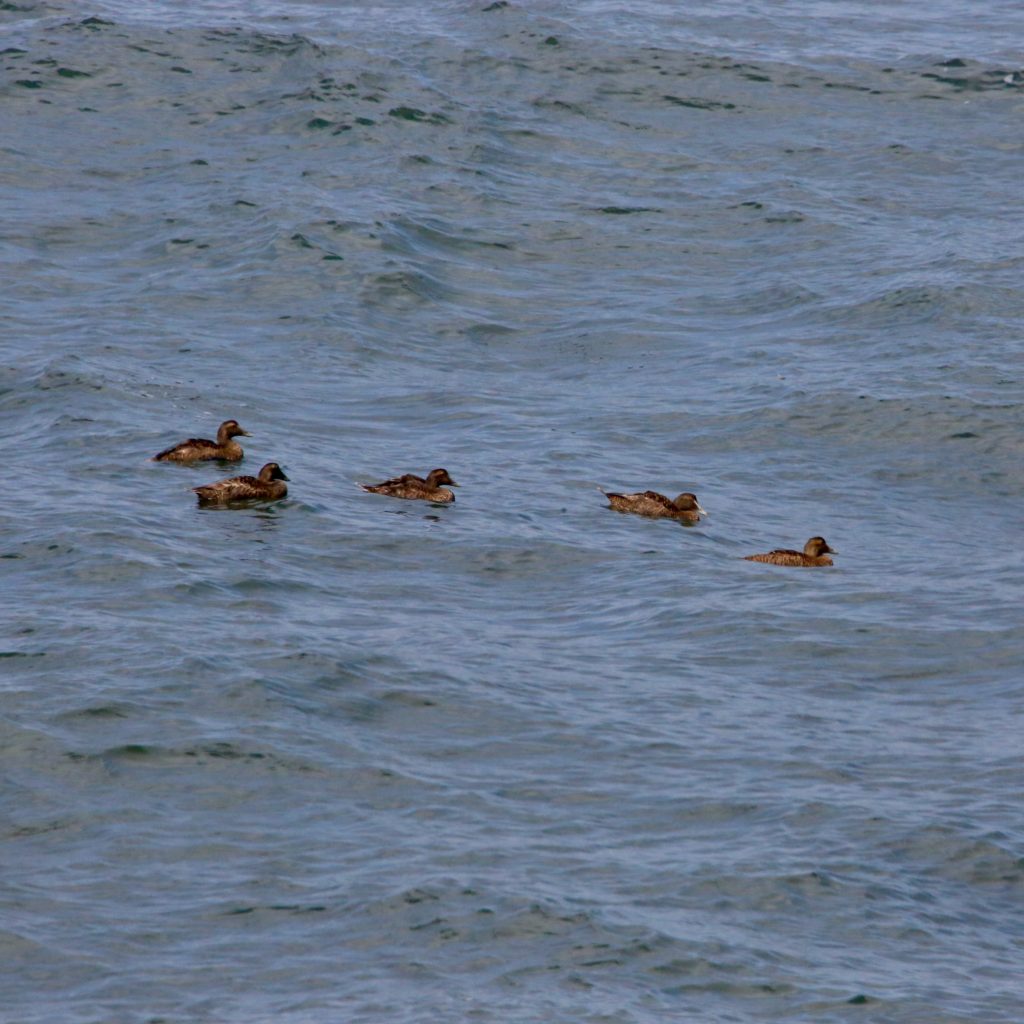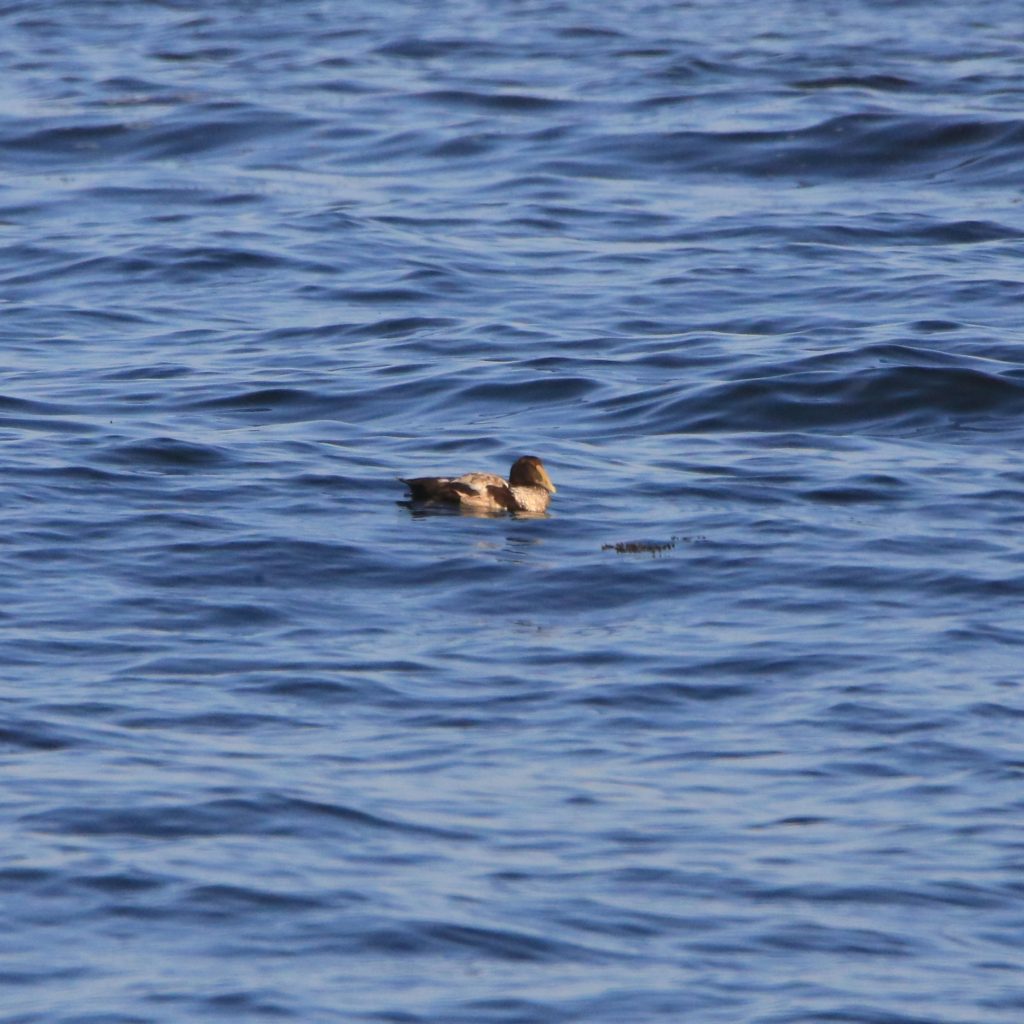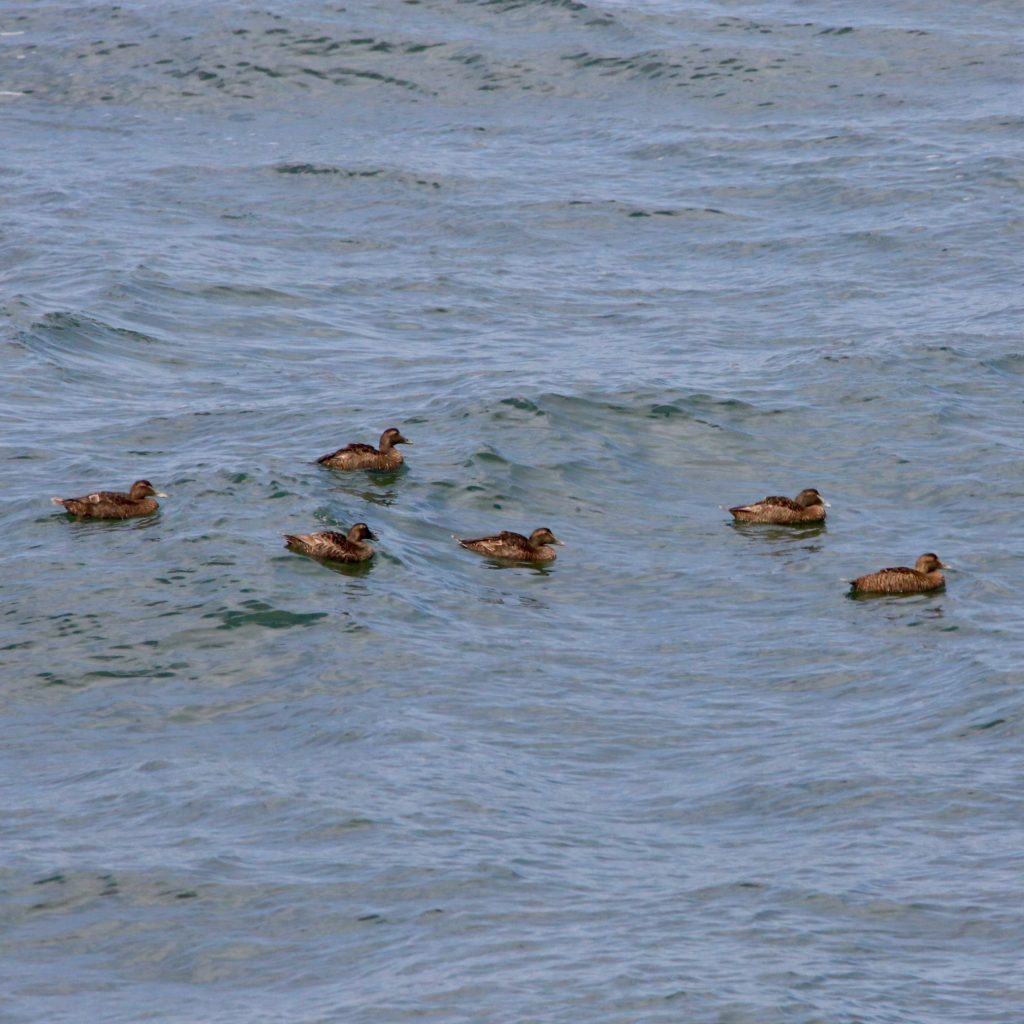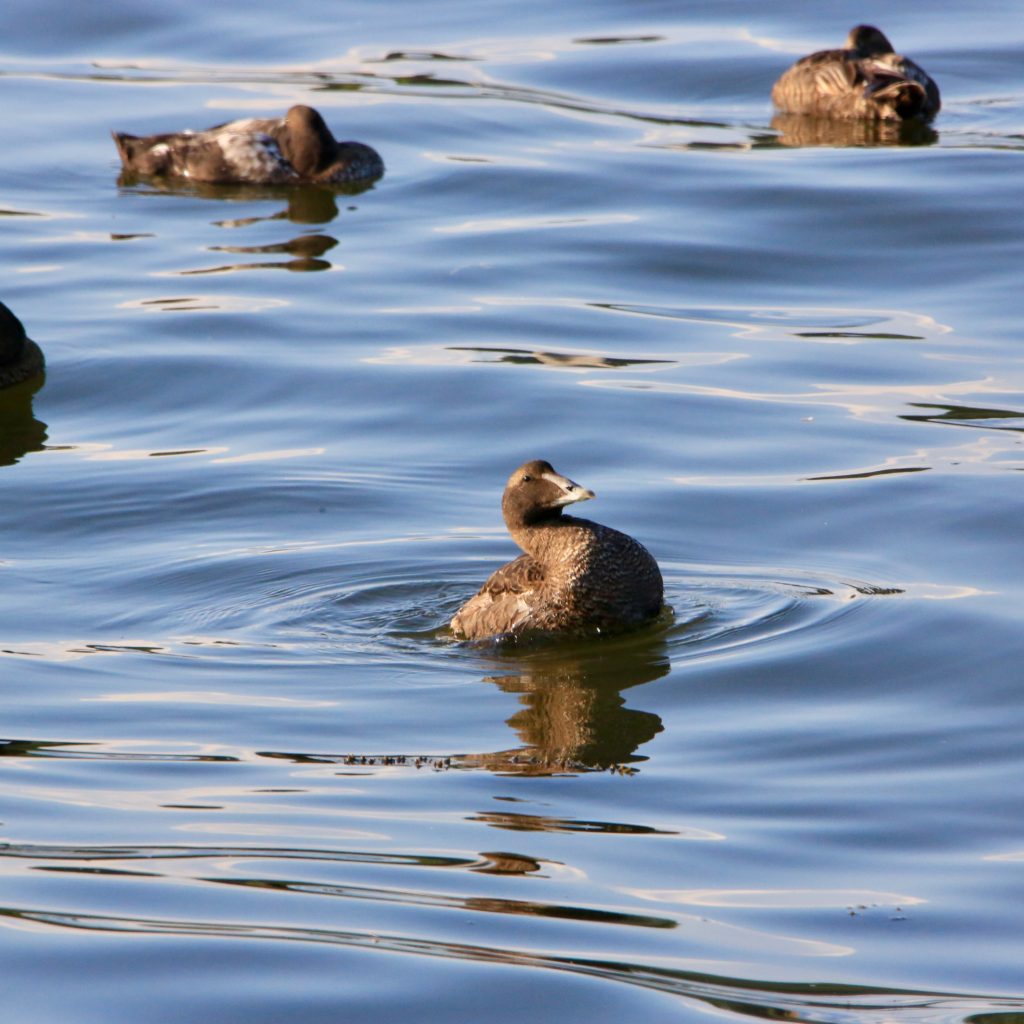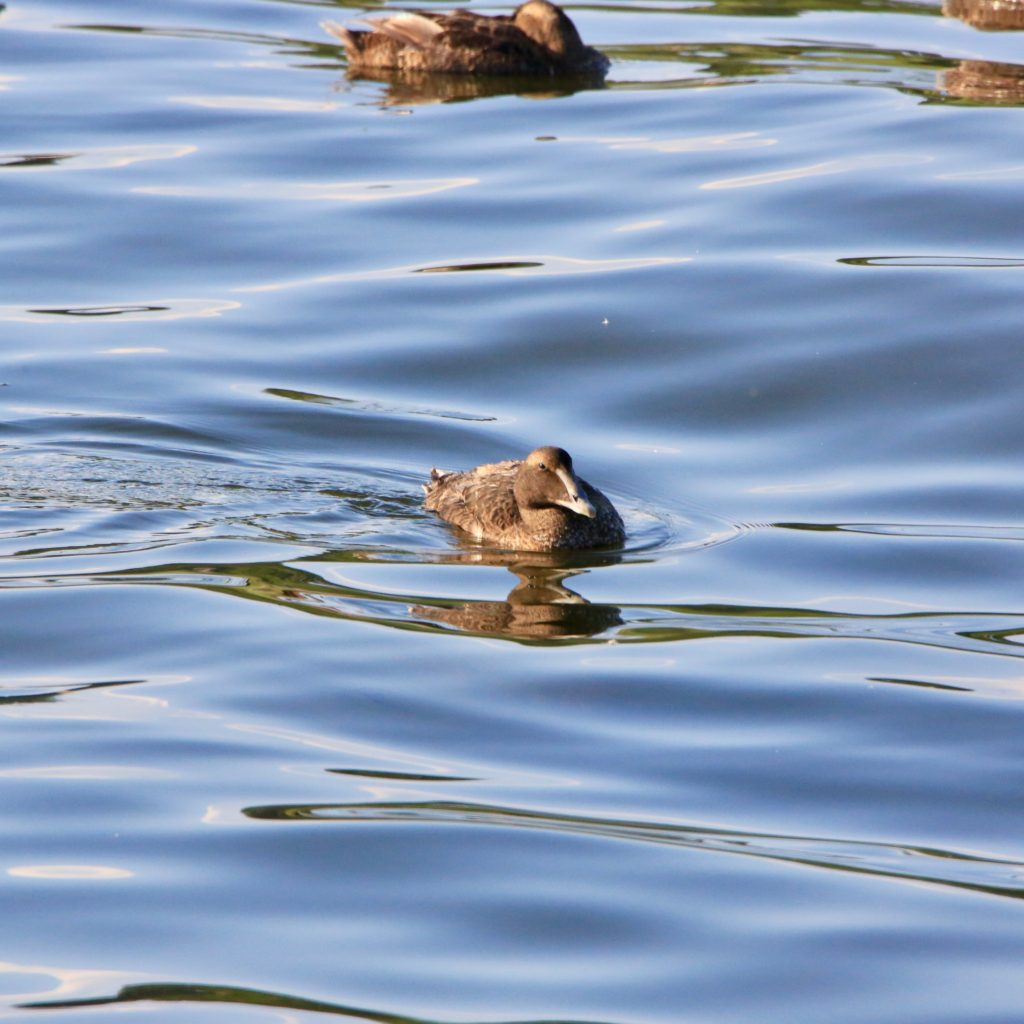
Common Eider
A Common Eider is a fun bird to see while bird watching. Below are some tips to help you identify Common Eiders. We have also put together a list of fun Common Eider t-shirts, Common Eider bird patches, birdhouses, bird feeders, binoculars, stickers, and other fun bird watching items.
About Common Eiders
The Common Eider (Somateria Mollisima) is a social sea bird famous for its insulating qualities and large husky size. It is most popular on the Northern coasts of Europe, Eastern Siberia, and North America.
Description and Identification
There are no ducks larger than Common Eiders in the northern hemisphere. They are 20-28 inches long, with a wingspan of 31-43 inches. Male Common Eiders weigh an average of 4.9 pounds, while the females are slightly lighter at an average of 4.2 pounds. These bulky ducks have large, wedge-shaped bills. Male Common Eiders are easily distinguishable by their black and white plumage and their pistachio-green napes. The brown coloration of the females is very similar to other ducks, but they can be differentiated on the basis of their large size and the unique shape of their heads. Male Common Eiders have a very humanlike “ah-ooo” call. Till Common Eiders reaches the age of 3 years their plumage keeps changing, often vastly changing annually. Therefore a great variety of coloration can be observed in their flocks.
Common Eider Color Pattern
Breeding bird: The male breeding bird’s plumage around its face, back, wings, and chest are white. On its face, it has a gray-green bill and a matching greenish line below its eye.
Non-breeding: The non-breeding male on the other hand is a dark brown to blackish color. Unlike the breeding male, the non-breeding Common Eider has a pale brown stripe running through it.
Female Bird: Adorned with a pale green bill, the female Common Eider is black all over especially around its sides and flanks.
Common Eider Size
The adult Common Eider is a large stocky bird with a wedge-shaped head and a long bill.
The relative size for both sexes is:
- Length: 19.7-27.9 in (50-71 cm)
- Weight: 41.6-107.2 oz (1180-3040 g)
Common Eider Behavior
By day or night, you will typically find the Common Eider foraging in shallow water by only submerging its head.
Common Eider Food
Common Eiders have a diet that mainly consists of mollusks. Fish, crustaceans, and echinoderms
are some other sources of nutrition for them. These ducks swallow the entirety of their prey and
crush them in their digestive tracts. Common Eiders spend a majority of their day in feeding. These
ducks dive to obtain their food. As these ducks are always found in large flocks, their pattern of
hunting is very systematic, leaders of the flock dive first into the water, and are soon followed by
the others. After eating their food these ducks rest on the land before going back to repeat the
same process. During the winter months, Common Eiders need to conserve their energy, so they might
stop feeding completely or find more efficient methods of hunting. The prey they hunt during
winters is often larger than usual.
These birds commonly feed on mollusks especially mussels and bivalves. Sometimes they also feed on crustaceans, crabs, and other aquatic animals and insects. If feeding on breeding grounds, The Common Eider eats insects and some plant material.
Common Eider Habitat
Common Eiders are mostly located in marine waters, generally around rocky coasts. Their nesting
habitats are usually low-lying coastal areas, shorelines, mosses, shrubs, low shrubs, and islets.
These ducks choose regions along coastlines that can shelter them from mammalian predators.
Common Eiders make their home close to coastlines throughout the seasons. However, during nesting season they tend to migrate to islands and coasts that have either coastal lagoons or forested rocky shorelines.
Range and Migration
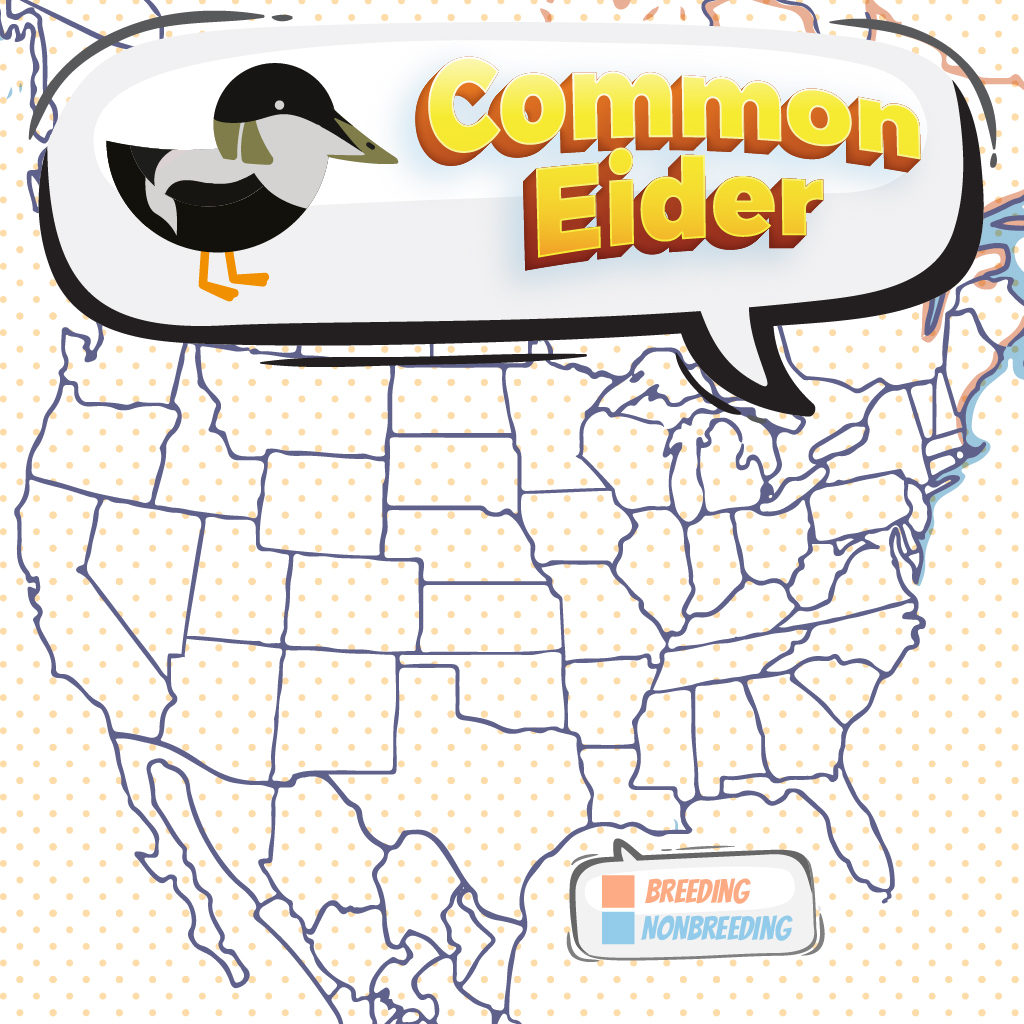
Common Eiders, also known as Cuddy’s ducks are sea-ducks that are widespread in coastal
regions of North America, Europe, and Eastern Siberia. Their breeding regions are in the northern
temperate zones and the Arctic. They travel south in temperate regions for their wintering grounds
in order to form large flocks in coastal waters. Common Eiders are hard to track while migrating as
they do so over large water bodies and remote areas.
Common Eider Life Cycle
The Common Eider lays olive green or olive-gray eggs three to five times a day. The female bird incubates the eggs for 24-25 days and continues to tend to the young one. The duckling leaves shortly after hatching to go into the water to find its own food. The young Common Eider takes flight after 65-75 days.
Common Eider Nesting
Common Eiders are monogamous in nature. These ducks begin intense courtship in spring, which
continues for a period long after the pair. This behavior guarantees a strong bond between the
pair. Male Common Eiders attract the females by a series of loud calls in which they make the “ow-
ee-urr” sound. While most of these ducks are already paired before reaching breeding grounds,
some of the pair when they reach the islands. The nests are selected by females on land that is
close to the sea. These nests are located under the cover of rocks or vegetation. Females line the
nests with their own feathers called eiderdown. After an incubation period of 24-26 days, the
nestlings are hatched.
Ornithology
Bird Watching Academy & Camp Subscription Boxes
At Bird Watching Academy & Camp we help kids, youth, and adults get excited and involved in bird watching. We have several monthly subscription boxes that you can subscribe to. Our monthly subscription boxes help kids, youth, and adults learn about birds, bird watching, and bird conservation.
Bird Watching Binoculars for Identifying Common Eiders
The most common types of bird-watching binoculars for viewing Common Eiders are 8×21 binoculars and 10×42 binoculars. Bird Watching Academy & Camp sells really nice 8×21 binoculars and 10×42 binoculars. You can view and purchase them here.
Common Eider T-shirts
If you love the Common Eider you should purchase a Bird Watching Academy & Camp T-shirt. To help support bird conservation we donate 10 percent to bird conservation activities.
Common Eider Iron On Patches
Kids, Youth, and Adults love to collect our Bird Watching Academy & Camp iron-on patches. Our bird-watching patches help you keep track of the birds you have seen and identified. You can also display the patches on our Bird Watching Academy & Camp banners.
The Common Eider is a great iron-on patch to start your collection with. The patches are durable and can be sewn on or ironed on to just about anything.
Common Eider Stickers
Stickers are a great way for you to display your love for bird watching and the Common Eider. We sell a monthly subscription sticker pack. The sticker packs have 12 bird stickers. These sticker packs will help your kids learn new birds every month.
Bird Feeders for Common Eiders
There are many types of bird feeders. Here are our favorite bird feeders for your backyard. We use all of these bird feeders currently. Kids will have a great time watching birds eat at these bird feeders. Using this collection of bird feeders will provide a wide variety and many types of birds.
Best Bird Houses for Common Eiders
There are many types of birdhouses. Building a birdhouse is always fun but can be frustrating. These 4 birdhouses have become our favorites. Getting a birdhouse for kids to watch birds grow is always fun. We spent a little extra money on these birdhouses but they have been worth the higher price and look great.


